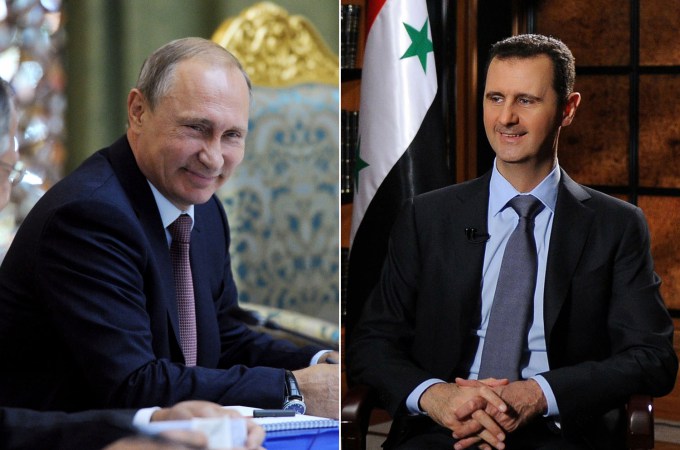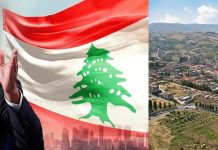مدينة اللاذقية هي “كعب أخيل” الأسد
فابريس بالونش/معهد واشنطن
23 أيلول/سبتمبر 2015
في الأشهر القليلة الماضية ازداد الجيش السوري ضعفاً وخسر الكثير من مواقعه، وهو تطوّر يفسّر نشر روسيا لقواتها في الآونة الأخيرة في سوريا، علماً أنّها لم تكن في السابق ترسل سوى مستشارين عسكريين وموظفين فنيين لدعم الجيش السوري. ومع ذلك، فإنّ السؤال الرئيسي الآخر الذي يطرح نفسه هو: لِماذا يتم إرسال هذه القوات إلى اللاذقية وليس طرطوس، موقع القاعدة العسكرية الروسية الرسمية؟ يمكن أن يعزى هذا الوجود الروسي الجديد القوي على طول الساحل السوري الشمالي في الواقع إلى ضعف نظام الأسد في هذه المنطقة حيث لم يعد أبناء الطائفة العلوية يشكّلون الأغلبية.
ديمغرافية اللاذقية
في عام 2010، كان يبلغ عدد سكان اللاذقية 400 ألف نسمة، حوالي 50 بالمائة منهم علويّين و40 بالمائة سنّة و 10 بالمائة مسيحيين – معظمهم من الطائفة الأرثوذكسية. وجغرافياً، يحتل العلويّون ضواحي المدينة الشمالية والشرقية، في حين يتركّز السنّة في وسطها وفي الضاحية الجنوبية “الرمل الفلسطيني”، وهي المنطقة الأفقر في المدينة. ويعيش المسيحيون في ما يُعرف بحي “الأمريكان” الذي سُمّي على هذا النحو تيمّناً بالمدرسة البروتستانتية التي أنشأتها الولايات المتحدة هناك. وفي هذه المدينة السنّية تاريخياً، لا يزال سكّان المنطقة القدامى يعتبرون العلويّون أجانب. فلم تكن المدينة تضمّ أيّ سكّان علوّيين إطلاقاً حتى الانتداب الفرنسي الذي بدأ في عام 1920، باستثناء خدم المنازل. وبعد أكثر من عقدين، في عام 1945، أصبح العلويّون يشكّلون 10 بالمائة فقط من السكان، وكانوا يقطنون في ضاحية فقيرة تُدعى “الرمل الشمالي”. غير أنّ التحوّل الديموغرافي المذهل الذي دفعته قدماً سياسة الرئيس السوري السابق حافظ الأسد والتي عرفت بـ “العلوية” أدت إلى أن يصبح العلويّون الأغلبية بحلول ثمانينيات القرن الماضي.
وبالمثل، ينقسم الريف المحيط باللاذقية بين قرى سنّية وأخرى علوية. فبالتوجّه شمالاً باتجاه تركيا على طول خط اللاذقية – الحفة – سلمى، يجد المرء أغلبية سنّية؛ فوفقاً لتعداد عام 2004 – يشكل السنّة حوالى 80 ألف نسمة من إجمالي عدد السكان الذي يبلغ 140 ألفاً. وعلى وجه الخصوص، فإنّ معظم سكان منطقتي ربيعة وقسطل معاف الفرعيتين هم من السنّة (التركمان)، وهو الأمر بالنسبة للقريتين الساحليتين برج إسلام وصليب التركمان. بيد، منذ أن بدأت الأزمة في عام 2011، انضم التركمان في ربيعة وقسطل معاف إلى المعارضة المسلحة، في حين فضّل تركمان قريتي برج إسلام وصليب التركمان اللتين تحيط بهما قرى علوية، البقاء على الحياد. كما تهيمن الطائفة السنّية أيضاً على الجزء الشمالي من جبل الأنصارية (جبل العلويين) شرق اللاذقية، بما في ذلك الحفة والقرى المحيطة بها وجبل الأكراد. وعلى الرغم من أنّ سكان جبل الأكراد هم من أصل كردي يرجع تاريخه إلى العصور الوسطى، لم يعد أحد منهم يتكلّم الكردية اليوم، وتُعتبر المنطقة عربية في الواقع. ومنذ ربيع عام 2012، يشكّل جبل الأكراد معقلاً للمتمردين، حيث تمّ احتلال الحفة لفترة قصيرة على يد متمردين قادمين من جبل الأكراد في شهر تموز/يوليو من ذلك العام، غير أنّ سكّانها لم ينضموا إليهم تخوّفاً من ردّ الحكومة.
ووفقاً لـ “مكتب الأمم المتحدة لتنسيق الشؤون الإنسانية” (أوتشا)، تضمّ مدينة اللاذقية الآن 200 ألف شخص من النازحين داخلياً، بالإضافة إلى 100 ألف شخص آخر من النازحين داخلياً في أماكن أخرى من محافظة اللاذقية، علماً أنّ أغلبهم من السكان السنّة من [محافظتي] إدلب وحلب. ويتوجه العلويّون إلى قرى علويّة والسنّة إلى مناطق سنّية، الأمر الذي أسفر عن زيادة في التمثيل السنّي على طول خط اللاذقية – الحفة – سلمى منذ عام 2011. وبحلول هذا الوقت، فرّ في الواقع معظم النساء والأطفال السنة من سكان جبل الأكراد ومنطقة ربيعة الفرعية إلى تركيا، حيث يعيشون كلاجئين، في حين يقاتل معظم الرجال ضد الجيش السوري.
الجبهة الشمالية الغربية الضعيفة
منذ ربيع عام 2012، تسيطر المعارضة المسلّحة على جبل الأكراد والمنطقة الواقعة على طول الحدود التركية وصولاً إلى قرية كساب الأرمنية. وفي آذار/مارس 2014، اقتحمت جماعات جهادية – كان جزء منها قادماً من تركيا – قرية الكساب ودمّرت الرادار الروسي على قمة جبل الأقرع. ولكن بعد أن فشلت في التقدّم جنوباً، غادرت كساب في حزيران/يونيو من ذلك العام. وإلى غرب إدلب في جسر الشغور وأريحا، هناك استمرارية جغرافية بين جبل الأكراد ومنطقة المتمردين الشمالية الغربية، مما يشكّل خطراً حقيقياً على سيطرة النظام في اللاذقية. ولهذا السبب، أنشأ الرئيس السوري بشار الأسد ميليشيا جديدة، هي “لواء درع الساحل” التابع لـ “جيش الدفاع الوطني”. والهدف المحدد لهذا اللواء هو حماية الساحل السوري بمساعدة الشباب العلويّين الذين رفضوا القتال خارج المنطقة العلوية. يتعيّن على الأسد أن يُظهر أنّه يحمي “علوستان”، إلا إذا أراد أن يمسك الجنود العلويّون بزمام الأمور ويتخلون عن دعم حكومتهم. وفي تموز/يوليو وآب/أغسطس 2015، هدّد هجوم المتمردين في سهل الغاب مدينة اللاذقية والقرى العلوية قليلة السكان في شمال جبل الأنصارية.
ونظراً إلى جميع هذه الديناميات، ما زال خطر اندلاع انتفاضة سنّية في اللاذقية قائماً. فالضاحية السنّية “الرمل الفلسطيني” محاطة بالجيش السوري منذ انتفاضة آب/أغسطس 2011 ولا يزال الكثير من سكانها ينتظرون اللحظة المناسبة للتحرك.
المعركة من أجل البحر
بالنسبة للمتمردين، يشكل الوصول إلى البحر خطوة استراتيجية ورمزية على حد سواء. فـ «جبهة النصرة» التابعة لتنظيم «القاعدة» وصلت إلى البحر المتوسط في غضون بضعة أيام فقط حين كانت قادمةً من كسّاب. و«جيش الفتح» الجديد الذي تقوده أيضاً «جبهة النصرة» سيحبّذ بشدة السيطرة على ميناء رئيسي مثل اللاذقية أو طرطوس. إن التركيز هنا على اللاذقية، من وجهة النظر هذه، أهم نسبياً. وبادئ ذي بدء، إن الطريق إلى اللاذقية أكثر يسراً من طريق طرطوس. كما وأن طرطوس مدينة علويّة بحق، مقارنةً باللاذقية، حيث يشكّل العلويّون 80 بالمائة من سكّان طرطوس، إلى جانب 10 بالمائة من السنّة و10 بالمائة من المسيحيين. أضِف إلى ذلك أنّ المنطقة الواقعة بين طرطوس وحمص تقطنها أغلبية علويّة، إلى جانب أقلية مسيحية قوية (على سبيل المثال، في صافيتا ووادي النصارى). وفي الريف المحيط بطرطوس، يتركّز السنّة حول الحميدية وتلكلخ. كما وأن «حزب الله» والجيش السوري يزيدون الطرق الجهادية الأخرى تعقيداً، حيث يحكمان سيطرتهما الشديدة على الحدود اللبنانية لمنع أي تنسيق بين أهل السنّة في سوريا من جهة وطرابلس ومنطقة عكّار السنّية من جهة أخرى. وقد اتضحت هذه الاستراتيجية من خلال معركة القصير في أيار/مايو 2013.
وتخضع دمشق وحمص حالياً لحماية «حزب الله» وغيره من الميليشيات الشيعية. فالاحتفاظ بهذه الأراضي أمرٌ ضروري سواء للنظام أو لـ «حزب الله» أو لمؤيديهما الإيرانيين، في حين تمثّل اللاذقية مصلحةً استراتيجية أقل أهمية لإيران، على عكس ما تشكّله من أهمية لروسيا التي تسعى إلى الحفاظ على وجود لها على طول الساحل أكثر مما تريد من دمشق أو مرتفعات الجولان. ولتحقيق هذه الغاية، لا تزال البحرية الروسية تحتفظ بقاعدتها في طرطوس وتخطط لإعادة بناء قاعدة الغواصات السوفيتية السابقة في جبلة التي تبعد نحو 32 كيلومتراً جنوب اللاذقية. وبهدف تعزيز قيام دولة علوية في المستقبل على الساحل السوري سواء امتدت لتشمل دمشق أم لا، تقوم روسيا أيضاً بتحصين موقعها على طول الحدود الجنوبية التركية سعياً لتحقيق هدفها النهائي المتمثل في منع القوات السورية السنية من الوصول إلى البحر.
المحصلة
نظراً لهجوم المتمردين بالقرب من إدلب في الربيع الماضي، توجد إمكانية حقيقية لوصول الحرب الأهلية إلى اللاذقية. وقد يلقى جيش المتمردين دعماً قوياً من السكان السنّة في المنطقة، الذين حلم الكثير منهم منذ وقتٍ طويل بالانتقام من جهود النظام لفرض سيطرة علوية على المدينة. وبعد سقوط جسر الشغور في نيسان/أبريل 2015، استولى الخوف على السكان العلويّين، وفرّت بعض العائلات إلى جبل الأنصارية، الذي يُعتبر أكثر أماناً من اللاذقية، والذي يصعب تقييم ولاء اللاجئين فيه للحكومة.
ويعيش العديد من الروس في اللاذقية، ويفهمون جيداً المشكلة الطائفية التي تواجهها المدينة والريف على حدّ سواء. أما بالنسبة إلى تدفق القوات الروسية، فهو ضروري لحماية المدينة، نظراً إلى الضعف الذي تشهده القوات السورية حالياً. وإذا نجح المتمردون في الاستيلاء على المدينة بأكملها أو على جزء منها، سيصبح اجتثاثهم منها صعباً للغاية. ومن شأن هذا الاستيلاء أن يتحدى المسار الروسي، الشبيه بما حصل في حالة جمهورية أبخازيا التي أصبحت مستقلةً بالكامل تقريباً عن جمهورية جورجيا بفضل الحماية الروسية – والذي يتناسب مع ما اعتادت روسيا على فعله ألا وهو إعداد دويلات صغيرة على أطرافها لتكون بمثابة قواعد عسكرية. وإذا ما تمّ إنشاء “علوستان” [كدويلة] قادرة على الاستمرار ومدعومة من روسيا، فإنها ستقدّم الكثير من المزايا التي تعود بها عليها دولة حقيقية، بما فيها الاعتماد الكامل على روسيا، ولكن من دون نفس التكاليف [التي عادة ما تتكبّدها هذه الأخيرة].
أما الأسد، فليس لديه خيار أفضل من القبول بالدور الروسي القوي في المنطقة الساحلية. فلم يعد بإمكان جيشه أن يدافع عن اللاذقية التي أصبحت تواجه احتمال هجوم المتمردين بدعم قوي من تركيا. كما أنّه لم يعد بإمكان الأسد أن يدافع عن دمشق من دون دعم «حزب الله» وإيران. ولطالما عقد الغرب والخليج الأمل على إمكانية أن يسمح ضعف الجيش السوري والإطاحة بالأسد في النهاية بفرض إتمام عملية انتقال سياسي، غير أنّ هذه الخطة لم تأخذ في الحسبان تدخّل روسيا المباشر، أو تدخّل إيران المباشر إذا تعرّضت دمشق للخطر.
ومن وجهة نظر فرنسا، سيستمر تنفيذ القصف ضد تنظيم «الدولة الإسلامية في العراق والشام» («داعش») أو «الدولة الإسلامية»، تحت راية الدفاع عن النفس، نظراً إلى أنّ الهجمات الإرهابية التي وقعت مؤخراً في فرنسا بدت وكأنّه قد تم التخطيط لها في سوريا. وبالتالي، لن تسعى فرنسا إلى إنكار جهود روسيا على الأرض في سوريا، والتي تبذلها رسمياً أيضاً لمكافحة الإرهاب. وستضطر غيرها من الدول الأوروبية أيضاً إلى اتخاذ وجهة نظر مماثلة تجاه روسيا، التي من خلال إرسال قواتها إلى منطقة علوية ستبدو وكأنها تقوم بخطوات ملموسة لحماية الأقليات في الشرق الأوسط، ولا تكتفي بتنظيم المؤتمرات على غرار المؤتمر الذي عقده وزير الخارجية الفرنسي لوران فابيوس في وقت سابق من هذا الشهر.
فابريس بالونش، هو أستاذ مشارك ومدير الأبحاث في “جامعة ليون 2″، وزميل زائر في معهد واشنطن.
Latakia Is Assad’s Achilles Heel
Fabrice Balanche/Washington Institute
Also available in العربية
September 23, 2015
In light of its large Sunni population, the coastal city and its environs are not secure for the Syrian regime, possibly explaining why Russian forces are concentrating there.
Over the past few months, the Syrian army has grown weaker and lost many positions, a development that explains Russia’s recent deployment of troops. Previously, Russia had sent only military advisors and technical staff to support the Syrian army. Another key question, however, involves why these troops are being sent to Latakia and not Tartus, site of the official Russian military base. Indeed, this new, strong Russian presence along the northern Syrian coast can be explained by the Assad regime’s weakness in the area, where Alawites no longer constitute a majority.
Latakia Demographics
In 2010, the population of Latakia was about 400,000, about 50 percent of whom were Alawite, 40 percent were Sunni, and 10 percent were Christian — mostly Orthodox. Geographically, Alawites occupy the northern and eastern suburbs, whereas Sunnis live downtown and in the southern suburb of al-Ramel al-Filistini, the city’s poorest area. Christians inhabit what is known as the American district, named for an American-established Protestant school. In this historically Sunni city, Alawites are still considered by the old urban dwellers to be foreigners. Up until the French Mandate, which began in 1920, the city had no Alawite residents at all, except household servants. More than two decades later, in 1945, Alawites constituted only 10 percent of the population, living in a poor suburb called al-Ramel al-Shemali. A dramatic demographic shift, however, was encouraged by President Hafiz al-Assad’s policy of “Alawitization,” which led Alawites to become a majority by the 1980s.
Click on images to download or view scalable PDFs. |
























